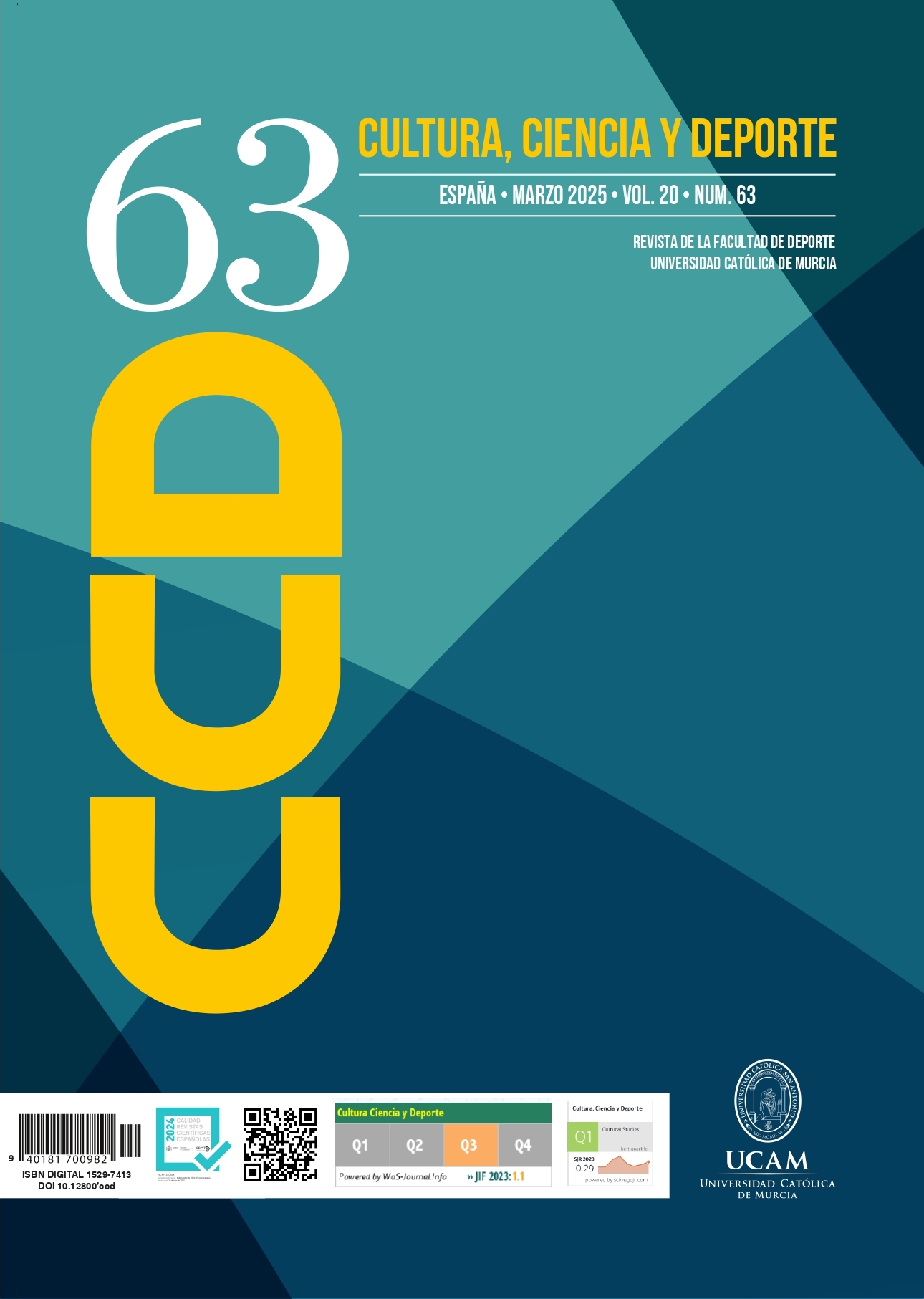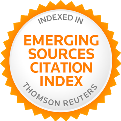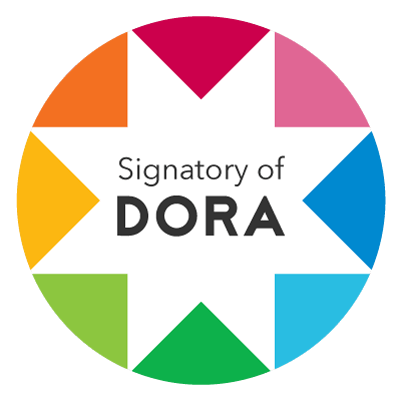The Influence of Physical Activity on Self-Esteem in the Educational Context: A Systematic Review
DOI:
https://doi.org/10.12800/ccd.v20i63.2224Abstract
Self-esteem can be defined as the evaluation that a subject makes of him/herself in favour of a satisfactory, healthy
and adaptive self-image. The concern for adequate self-esteem has led to the appearance of different lines of research, including Physical Activity and Physical Education. In this sense, several studies have addressed the benefits of Physical Activity in the educational environment on self-esteem, although there are few studies that gather conclusive results. For this reason, we present a systematic review, based on the PRISMA method, with the aim of identifying and analysing the programmes that have been carried out in relation to the work on self-esteem and physical activity in the Primary and Secondary Education stages. The databases Web of Science, Scopus, PubMed, Eric and PsycInfo were used for this review. Following a blind peer review of the quality of the papers, using the Standard Quality Assessment Criteria for Evaluating Primary Research Papers from a Variety of Fields, 10 articles were selected. The findings showed the positive influence of physical activity in education, either through planned programmes for the improvement of this variable or the simple
performance of physical activity. The scarcity of research in this regard shows the need for further progress in this field, and in light of the results obtained, it seems necessary to create educational contexts, programmes and studies that promote the psychosocial well-being of students.
References
Andrade, A., Cruz, W. M. da, Correia, C. K., Santos, A. L. G., & Bevilacqua, G. G. (2020). Effect of practice exergames on the mood states and self-esteem of elementary school boys and girls during physical education classes: A cluster-randomized controlled natural experiment. PLOS ONE, 15(6), e0232392. https://doi.org/10.1371/journal.pone.0232392
Armada-Crespo, J. M., González López, I., & Montávez Martín, M. (2013). La expresión corporal: un proyecto para la inclusión. RETOS. Nuevas Tendencias en Educación Física, Deporte y Recreación, 24, 107–112. https://dialnet.unirioja.es/descarga/articulo/4482483.pdf
Armada-Crespo, J. M., Montávez Martín, M., & González López, I. (2020). Influencia de la Expresión Corporal en el desarrollo de las Habilidades Socioafectivas en Educación Secundaria. Movimento (ESEFID/UFRGS), 26, e26080. https://doi.org/10.22456/1982-8918.104634
Armada-Crespo, J., & Rosa-Jiménez, A. (2019). La expresión corporal en un aula de convivencia: una herramienta para la mejora de la autoestima. Tándem: Didáctica de La Educación Física, 66, 7-12. https://www.grao.com/revistas/arte-corporal-propuestas-educativas-para-la-inclusion-32700?contenido=365913
Atienza, F. L., Moreno, Y., & Balaguer, I. (2000). Análisis de la dimensionalidad de la Escala de Autoestima de Rosenberg en una muestra de adolescentes valencianos. Revista de Psicología Universitas Tarraconensis, 22, 29–42.
Aymerich, M., Berra, S., Guillamón, I., Herdman, M., Alonso, J., Ravens-Sieberer, U., & Rajmil, L. (2005). Desarrollo de la versión en español del KIDSCREEN, un cuestionario de calidad de vida para la población infantil y adolescente. Gaceta Sanitaria, 19(2), 93–102. https://doi.org/10.1157/13074363
Baena-Morales, S., Ferriz-Valero, A., & García-Taino, O. (2022). Influence of cooperative strategies and mindfulness on the perception and control of emotions in primary physical education. A proposal to improve sustainability in the social dimension. Journal of Physical Education and Sport, 22(7), 1590-1598. https://doi.org/10.7752/jpes.2022.07200
Bailey, R. (2017). Sport, physical activity and educational achievement – towards an explanatory model. Sport in Society, 20(7), 768–788. https://doi.org/10.1080/17430437.2016.1207756
Benítez-Sillero, J. D., Corredor-Corredor, D., Córdoba-Alcaide, F., & Calmaestra, J. (2021). Intervention programme to prevent bullying in adolescents in physical education classes (PREBULLPE): a quasi-experimental study. Physical Education and Sport Pedagogy, 26(1), 36–50. https://doi.org/10.1080/17408989.2020.1799968
Benítez-Sillero, J. de D., Armada-Crespo, J. M., Morente-Montero, Á., & Moreno, E. M. (2022). Relación entre la empatía en la adolescencia con los diferentes tipos de actividad física practicada. Publicaciones, 52(2), 245–279. https://doi.org/10.30827/publicaciones.v52i2.22231
Bisquerra, R. (2003). Educación emocional y competencias básicas para la vida. Revista de Investigación Educativa, 21(1), 7–43. https://revistas.um.es/rie/article/view/99071
Boraita, R. J., Dalmau Torres, J. M., Ibort, E. G., & Alsina, D. A. (2023). Analysis of the Lifestyle and Psychological Well-being of Adolescents: Age-related Differences. Child Indicators Research, 16(1), 109–134. https://doi.org/10.1007/s12187-022-09977-7
Brandt, R., Herrero, D., Massetti, T., Crocetta, T. B., Guarnieri, R., de Mello-Monteiro, C. B., da Silveira-Viana, M., Bevilacqua, G. G., de Abreu, L. C., & Andrade, A. (2016). The Brunel Mood Scale Rating in Mental Health for Physically Active and Apparently Healthy Populations. Health, 08(02), 125–132. https://doi.org/10.4236/health.2016.82015
Cohen, S., Kamarck, T., & Mermelstein, R. (1983). A Global Measure of Perceived Stress. Journal of Health and Social Behavior, 24(4), 385. https://doi.org/10.2307/2136404
Cronin, L. D., Allen, J., Mulvenna, C., & Russell, P. (2018). An investigation of the relationships between the teaching climate, students’ perceived life skills development and well-being within physical education. Physical Education and Sport Pedagogy, 23(2), 181–196. https://doi.org/10.1080/17408989.2017.1371684
Dale, L. P., Vanderloo, L., Moore, S., & Faulkner, G. (2019). Physical activity and depression, anxiety, and self-esteem in children and youth: An umbrella systematic review. Mental Health and Physical Activity, 16, 66–79. https://doi.org/10.1016/j.mhpa.2018.12.001
De Bate, R. D., & Thompson, S. H. (2005). Girls on the Run: Improvements in self-esteem, body size satisfaction and eating attitudes/behaviors. Eating and Weight Disorders - Studies on Anorexia, Bulimia and Obesity, 10(1), 25–32. https://doi.org/10.1007/BF03353416
Dewaraja, R., Sato, H., & Ogawa, T. (2006). Anxiety in tsunami-affected children in Sri Lanka measured by Revised Children’s Manifest Anxiety Scale and Synthetic House–Tree–Person Test. International Congress Series, 1287, 74–78. https://doi.org/10.1016/j.ics.2005.12.035
Do, K. H., & Lee, J. M. (2011). Structural relationships among adolescents’ internet addiction, self-esteem, self-control, and aggression. Korean Home Management Association, 29(3), 59–69.
Endler, N. S., & Parker, J. D. A. (1994). Assessment of multidimensional coping: Task, emotion, and avoidance strategies. Psychological Assessment, 6(1), 50–60. https://doi.org/10.1037/1040-3590.6.1.50
Fonseca-Pedrero, E., Paíno-Piñeiro, M., Lemos-Giráldez, S., Villazón-García, Ú., & Muñiz, J. (2009). Validation of the Schizotypal Personality Questionnaire—Brief Form in adolescents. Schizophrenia Research, 111(1–3), 53–60. https://doi.org/10.1016/j.schres.2009.03.006
Fox, K. R. (2000). Self-esteem, self-perceptions and exercise. International Journal of Sport Psychology, 31, 228–240.
González-Valero, G., Ubago-Jiménez, J. L., Castro-Sánchez, M., García-Martínez, I., & Sánchez Zafra, M. (2019). Prevención y tratamiento de lesiones lumbares con herramientas físico-médicas. Una revisión sistemática. Sportis. Scientific Journal of School Sport, Physical Education and Psychomotricity, 5(2), 232–249. https://doi.org/10.17979/sportis.2019.5.2.3409
Harrington, D. M., Davies, M. J., Bodicoat, D. H., Charles, J. M., Chudasama, Y. V., Gorely, T., Khunti, K., Plekhanova, T., Rowlands, A. V., Sherar, L. B., Tudor Edwards, R., Yates, T., & Edwardson, C. L. (2018). Effectiveness of the ‘Girls Active’ school-based physical activity programme: A cluster randomised controlled trial. International Journal of Behavioral Nutrition and Physical Activity, 15(1), 40. https://doi.org/10.1186/s12966-018-0664-6
Harris, D. V., & Harris, B. L. (1984). The athlete’s guide to sports psychology: Mental skills for physical people. Leisure Press. https://archive.org/details/athletesguidetos00harr
Hosogi, M., Okada, A., Fujii, C., Noguchi, K., & Watanabe, K. (2012). Importance and usefulness of evaluating self-esteem in children. BioPsychoSocial Medicine, 6(1), 9. https://doi.org/10.1186/1751-0759-6-9
Hue, C. (2016). Inteligencia emocional y bienestar. In J. L. Soler, L. Aparicio, O. Díaz, E. Escolano & A. Rodríguez (Eds.), Inteligencia Emocional y Bienestar II: reflexiones, experiencias profesionales e investigaciones (pp. 32–44). Ediciones Universidad de San Jorge. https://dialnet.unirioja.es/servlet/libro?codigo=655308
Kang, M.-J., & Kim, H. (2023). Development and Evaluation of a Blended Learning Mindfulness Program for High School Students During the COVID-19 Pandemic. The Journal of School Nursing, 39(2), 172–180. https://doi.org/10.1177/10598405221095346
Klizas, S. (2009). Psychosocial adjustment for students of middle school age and its strengthening during lessons of physical education. LKKA.
Klizas, Š., Malinauskas, R., Karanauskienė, D., Senikienė, Ž., & Klizienė, I. (2012). Changes in Psychosocial Adjustment of Adolescent Girls in the Lessons of Physical Education. Medicina, 48(9), 69. https://doi.org/10.3390/medicina48090069
Kliziene, I., Klizas, S., Cizauskas, G., & Sipaviciene, S. (2018). Effects of a 7-month Exercise Intervention Programme on the Psychosocial Adjustment and Decrease of Anxiety Among Adolescents. European Journal of Contemporary Education, 7(1), 127-136. https://doi.org/10.13187/ejced.2018.1.127
Kmet, L. M., Lee, R. C., & Cook, L. S. (2004). Standard Quality Assessment Criteria for Evaluating Primary Research Papers from a Variety of Fields. Alberta Heritage Foundation for Medical Research. https://doi.org/10.7939/R37M04F16
Knox, E. C. L., & Muros, J. J. (2017). Gender and school-stage associations with health-related behaviours and health-related quality of life in Spanish children. International Journal of Mental Health Promotion, 19(5), 278–288. https://doi.org/10.1080/14623730.2017.1345689
Koo, T. K., & Li, M. Y. (2016). A guideline of selecting and reporting intraclass correlation coefficients for reliability research. Journal of Chiropractic Medicine, 15(2), 155–163. https://doi.org/10.1016/j.jcm.2016.02.012
Kowalski, K. C., Crocker, P. R. E., & Kowalski, N. P. (1997). Convergent Validity of the Physical Activity Questionnaire for Adolescents. Pediatric Exercise Science, 9(4), 342–352. https://doi.org/10.1123/pes.9.4.342
Lee, H. J. (2019). Development and effects of school-based mindfulness program for high school girls. Seoul National University.
Léger, L. A., Mercier, D., Gadoury, C., & Lambert, J. (1988). The multistage 20 metre shuttle run test for aerobic fitness. Journal of Sports Sciences, 6(2), 93–101. https://doi.org/10.1080/02640418808729800
Liaghatdar, M. J., Jafari, E., Abedi, M. R., & Samiee, F. (2008). Reliability and Validity of the Oxford Happiness Inventory among University Students in Iran. The Spanish Journal of Psychology, 11(1), 310–313. https://doi.org/10.1017/S1138741600004340
Lubans, D. R., Plotnikoff, R. C., & Lubans, N. J. (2012). Review: A systematic review of the impact of physical activity programmes on social and emotional well‐being in at‐risk youth. Child and Adolescent Mental Health, 17(1), 2–13. https://doi.org/10.1111/j.14753588.2011.00623.x
Marsh, H. W., & O’Neill, R. (1984). Self description questionnaire III: The contruct validity of multidimensional self-concept ratings by late adolescents. Journal of Educational Measurement, 21(2), 153–174. https://doi.org/10.1111/j.1745-3984.1984.tb00227.x
Martínez-Gómez, D., Martínez-de-Haro, V., Pozo, T., Well, G. J., Villagra, A., Calle, M. E., Marcos, A., & Veiga, O. L. (2009). Fiabilidad y validez del cuestionario de actividad física PAQ-A en adolescentes españoles. Revista Española de Salud Pública, 83, 427–439. https://scielo.isciii.es/scielo.php?script=sci_arttext&pid=S1135-57272009000300008
Moher, D., Shamseer, L., Clarke, M., Ghersi, D., Liberati, A., Petticrew, M., Shekelle, P., & Stewart, L. A. (2015). Preferred reporting items for systematic review and meta-analysis protocols (PRISMA-P) 2015 statement. Systematic Reviews, 4(1), 1. https://doi.org/10.1186/2046-4053-4-1
Navarro-Patón, R., Pazos-Couto, J. M., Rodríguez-Fernández, J. E., & Arufe-Giráldez, V. (2019). Measuring physical self- concept of schoolchildren aged 10 to 16 on physical education lessons. Journal of Human Sport and Exercise, 15(1). https://doi.org/10.14198/jhse.2020.151.01
Page, M. J., McKenzie, J. E., Bossuyt, P. M., Boutron, I., Hoffmann, T. C., Mulrow, C. D., Shamseer, L., Tetzlaff, J. M., & Moher, D. (2021). Updating guidance for reporting systematic reviews: development of the PRISMA 2020 statement. Journal of Clinical Epidemiology, 134, 103–112. https://doi.org/10.1016/j.jclinepi.2021.02.003
Pelegrín-Muñoz, A., Garcés de Los Fayos-Ruiz, E., & Cantón-Chirivella, E. (2010). Estudio de conductas prosociales y antisociales: Comparación entre niños y adolescentes que practican y no practican deporte. Informació Psicológica, 99, 64–78. https://www.informaciopsicologica.info/revista/article/view/149
Pellicer, I. (2015). NeuroEF. La revolución de la Educación Física desde la Neurociencia. Inde.
Pellicer, I. (2018). Educación Física emocional. De la teoría a la práctica. Inde.
Perotta, F., Corona, F., & Cozzarelli, C. (2011). The efficacy of the project motorfit: Educational Actions through physical activity in schools. Sport Science, 4(1), 34–39.
PRISMA (2020). PRISMA 2020 flow diagram. https://www.prisma-statement.org/prisma-2020-flow-diagram
Pyszczynski, T., Greenberg, J., Solomon, S., Arndt, J., & Schimel, J. (2004). Why Do People Need Self-Esteem? A Theoretical and Empirical Review. Psychological Bulletin, 130(3), 435–468. https://doi.org/10.1037/0033-2909.130.3.435
Richmond, R. (1994). Revised children’s manifest anxiety scale. CA: Western Psychological Services.
Rogers, C. R., & Dymond, R. F. (1954). Psychotherapy and personality change. University of Chicago Press.
Rohlfs, I. C. P. de M., Rotta, T. M., Luft, C. D. B., Andrade, A., Krebs, R. J., & Carvalho, T. de. (2008). A Escala de Humor de Brunel (Brums): instrumento para detecção precoce da síndrome do excesso de treinamento. Revista Brasileira de Medicina Do Esporte, 14(3), 176–181. https://doi.org/10.1590/S1517-86922008000300003
Rosenberg, M. (1965). Rosenberg self-esteem scale (SES). Society and self-image. Princeton Univ Press.
Rosenberg, M. (1989). Determinants of Self-Esteem. Cit Class.
Russo, G., Nigro, F., Raiola, G., & Ceciliani, A. (2019). Self-esteem in physically active middle school students. Journal of Physical Education and Sport, 2019(5), 1984–1988. https://cris.unibo.it/handle/11585/703920
Salazar, Z. (2008). Adolescencia e imagen corporal en la época de la delgadez. Reflexiones, 87(2), 67–80. https://www.redalyc.org/articulo.oa?id=72912555004
Sarason, I. G., & Sarason, B. R. S. (1990). Test anxiety. En H. Leitenberg (Ed.), Handbook of social and evaluation anxiety (pp.475-496). Plenum Press. https://doi.org/10.1007/978-1-4899-2504-6
Serra-Majem, L., Ribas, L., Ngo, J., Ortega, R. M., García, A., Pérez-Rodrigo, C., & Aranceta, J. (2004). Food, youth and the Mediterranean diet in Spain: Development of KIDMED, Mediterranean Diet Quality Index in children and adolescents. Public Health Nutrition, 7(7), 931-935. https://doi.org/10.1079/PHN2004556
Stewart, A., Marfell-Jones, M., Olds, T., & de Ridder, H. (2011). International standards for anthropometric assessment. International Society for the Advancement of Kinanthropometry.
Suldo, S. M., & Huebner, E. S. (2006). Is Extremely High Life Satisfaction During Adolescence Advantageous? Social Indicators Research, 78(2), 179–203. https://doi.org/10.1007/s11205-005-8208-2
The KIDSCREEN Group Europe. (2006). The KIDSCREEN Questionnaires – Quality of life questionnaires for children and adolescents. Pabst Science.
Theocharidou, O., Lykesas, G., Giossos, I., Chatzopoulos, D., & Koutsouba, M. (2018). The positive effects of a combined program of creative dance and BrainDance on health-related quality of life as perceived by primary school students. Physical Culture and Sport. Studies and Research, 79(1), 42-52. https://doi.org/10.2478/pcssr-2018-0019
Tremblay, M. S., Inman, J. W., & Willms, J. D. (2000). The relationship between physical activity, self-esteem, and academic achievement in 12-year-old children. Pediatric Exercise Science, 12(3), 312-323. https://doi.org/10.1123/pes.12.3.312
Vallejo, A. G., & Alguacil Jiménez, M. (2022). Influencia de la actividad físico-deportiva en el rendimiento académico, la autoestima y el autoconcepto de las adolescentes: el caso de la isla de Tenerife. RETOS. Nuevas Tendencias en Educación Física, Deporte y Recreación, 46, 120-128. https://doi.org/10.47197/retos.v46.93496
Waldron, J. J. (2009). Development of life skills and involvement in the Girls on Track program. Women in Sport and Physical Activity Journal, 18(2), 60-73. https://doi.org/10.1123/wspaj.18.2.60
Yìğìter, K. (2014). The effects of participation in regular exercise on self-esteem and hopelessness of female university students. Social Behavior and Personality: An International Journal, 42(8), 1233-1243. https://doi.org/10.2224/sbp.2014.42.8.1233
Yook, Y.-S., Kang, S.-J., & Park, I. (2017). Effects of physical activity intervention combining a new sport and mindfulness yoga on psychological characteristics in adolescents. International Journal of Sport and Exercise Psychology, 15(2), 109-117. https://doi.org/10.1080/1612197X.2015.1069878
Zandi, H., Amirinejhad, A., Azizifar, A., Aibod, S., Veisani, Y., & Mohamadian, F. (2021). The effectiveness of mindfulness training on coping with stress, exam anxiety, and happiness to promote health. Journal of Education and Health Promotion, 10, 1-8. https://doi.org/10.4103/jehp.jehp_616_20
Published
How to Cite
Issue
Section
License
Copyright (c) 2025 Creative Commons Attribution License

This work is licensed under a Creative Commons Attribution-NonCommercial-ShareAlike 4.0 International License.
The authors who publish in this journal agree with the following terms:
- The authors retain the copyright and guarantee the journal the right to be the first publication of the work as well as licensed under a Creative Commons Attribution License that allows others to share the work with recognition of the authorship of the work and the initial publication in this journal.













